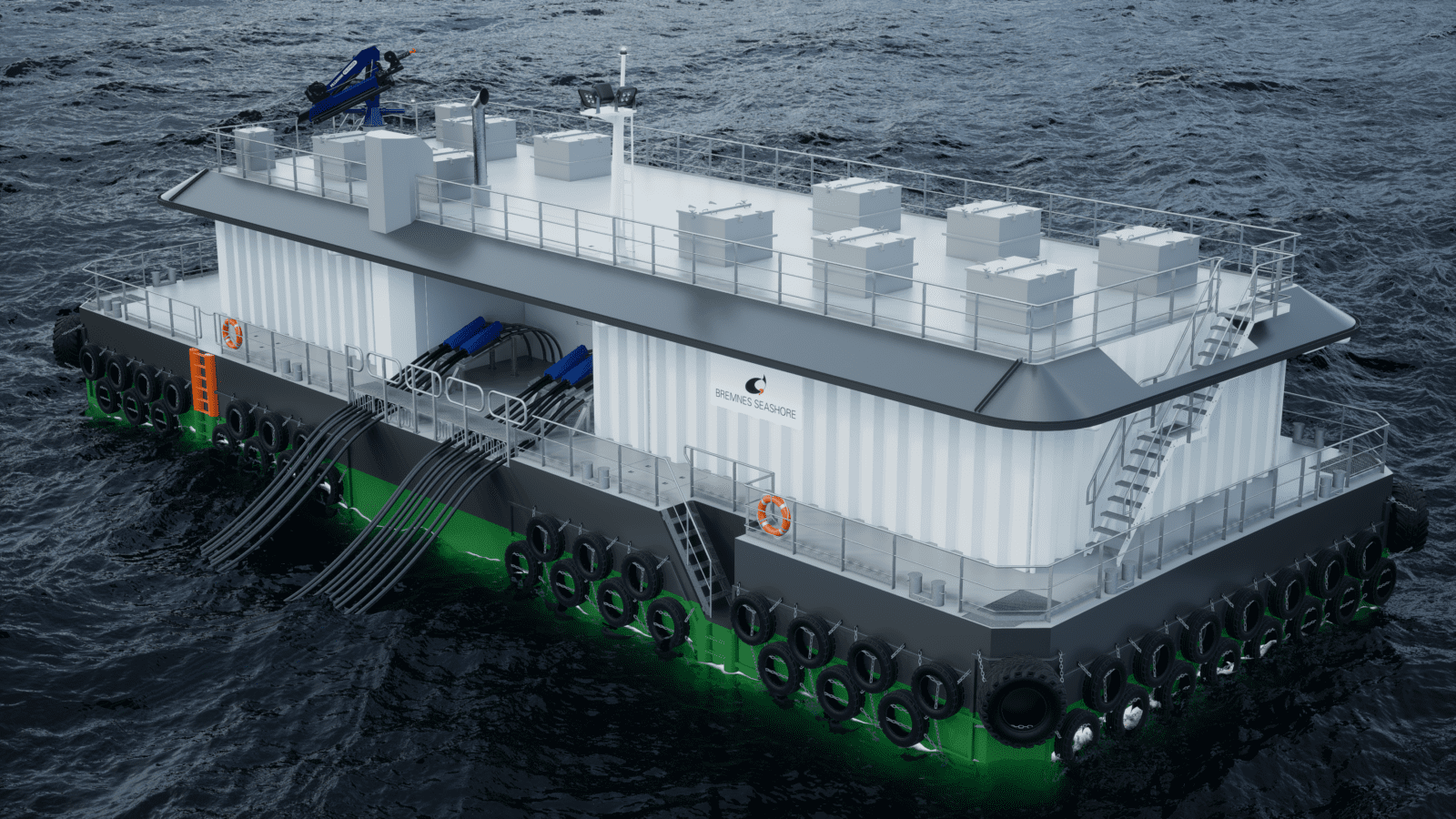
Háafell in Iceland has signed a contract for a new feeding barge
Háafell has signed a contract with GroAqua to deliver a new-design feeding barge, equipped with its cutting-edge technology and designed for optimal fuel economy, to be situated in a remote and exposed area in northern Iceland.
The feeding barge is custom designed to maximize fuel efficiency to reduce the impact on the environment. A hybrid power supply powers all systems onboard, with generators running only two to four hours per day. This not only improves power efficiency but also reduces fuel usage and lowers carbon emissions and noise pollution.
– GroAqua has a lot of experience in building feeding barges, especially in areas with unpredictable weather and challenging seas, says Gauti Geirsson, CEO of Háafell. In this project, they have stepped further and taken icing into account to ensure better stability and safety. Furthermore, we are taking big steps toward more sustainable farming as the barge will be hybrid with a powerful battery package, and it will be prepared for shore power. In addition to this, the barge will be prepared for water feeding.
Designed for the harsh environment in Northern Iceland, the barge can withstand a significant wave height of up to Hs 5,5m. The hull has double sides, making it more robust and safer to operate while also reducing condensation on the inner walls. It is equipped with 6 feeding lines and a 480 tonnes capacity for salmon, and 5 tonnes for lumpfish. All systems onboard are fully automated and remotely controlled from shore.
– We are proud of this new design that we have been working on over the past 6 months, says Suni Justinussen, CEO of GroAqua. Our team has worked closely with Háafell on this barge, designed specifically for remote and exposed sites in Northern Iceland.
The new feeding barge is planned to be delivered in August 2023.
GroAqua specialises in facilitating sustainable fish growth with a range of technical solutions to remotely monitor and control the feeding and breeding process – both in seawater and freshwater.





